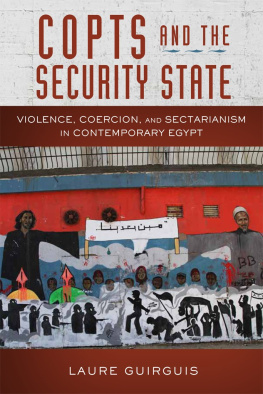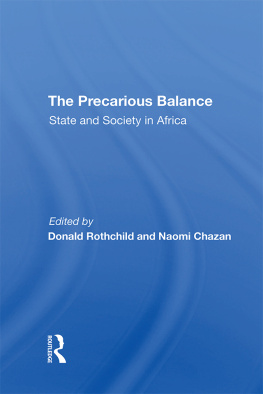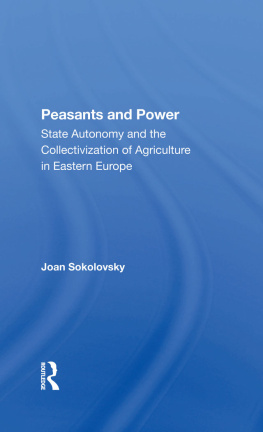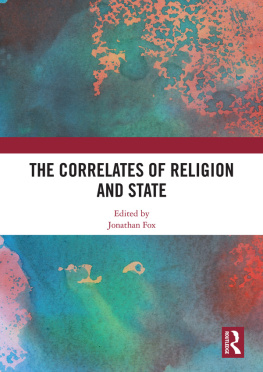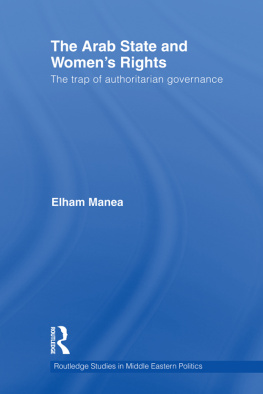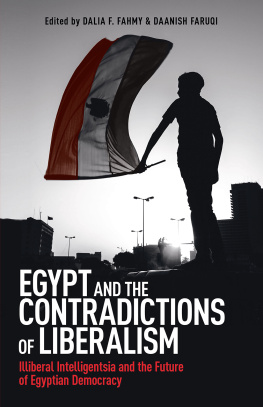The Politics of Egypt
The Politics of Egypt
StateSociety Relationship
Ninette S. Fahmy

First Published in 2002
by Routledge
2 Park Square, Milton Park, Abingdon, Oxon, OX14 4RN
Simultaneously published in the USA and Canada
by Routledge
270 Madison Ave, New York NY 10016
Routledge is an imprint of the Taylor & Francis Group
Transferred to Digital Printing 2008
2002 Ninette S. Fahmy
Typeset in Janson by LaserScript Ltd, Mitcham, Surrey
All rights reserved. No part of this book may be reprinted or reproduced or utilised in any form or by any electronic, mechanical, or other means, now known or hereafter invented, including photocopying and recording, or in any information storage or retrieval system, without permission in writing from the publishers.
British Library Cataloguing in Publication Data
A catalogue record of this book is available from the British Library
Library of Congress Cataloguing in Publication Data
A catalogue record for this book has been requested
ISBN 0-7007-1610-6
Publisher's Note
The publisher has gone to great lengths to ensure the quality of this
reprint but points out that some imperfections in the original
may be apparent
Contents
List of Tables
List of Figures
Acknowledgements
I wish to acknowledge my thanks to many people for the completion of this work. First and foremost to Michael Rush not only for the supervision and the valuable comments he gave me on my doctoral thesis, but also for reading and re-reading all the papers I presented in conferences and the one that I managed to get published. He has been extremely patient and generous with his time and my gratitude to him is beyond any expression. Jeffrey Stanyer has always been supportive and has always been there to provide guidance. His help and support is equally appreciable. The late Peter Butler was always sympathetic and never hesitated to offer his succour when needed. Raymond Hinnebusch was kind enough to comment on parts of this book presented as papers in conferences and was always encouraging. I also owe my thanks to the Department of Politics at the University of Exeter for financially supporting most of the conferences I went to, and for providing me with the opportunity to expose and test my ideas against a wider audience. I would also like to thank Mrs Carol Bebawy who edited most of this book.
Special thanks to Adel who works in al-Menia Governorate, for escorting me during the interviews I conducted in Tihna al Gabal. Adel has dedicated a lot of his time and effort throughout the seven months I resided in the village. In an environment which is highly suspicious of outsiders, let alone a Coptic woman, he helped build the trust with the peasants which facilitated my fieldwork. Many people in Tihna have provided me with inside information, but prefer to remain anonymous, to them all I am thankful.
Finally I would like to thank my mother. Not only has she financially and morally supported me during the period of my study, but also being a professor of political geography herself has always held arguments with me on Egyptian politics and, although at times we did not agree, her comments were extremely beneficial.
Introduction
The relationship between state and society in Egypt has long been a controversial issue. The prevailing literature tends either to overestimate the strength of the Egyptian state or overestimate that of society This books explores the nature of the Egyptian state and how it shapes society Through the analysis of the various societal forces this study will show how society reacts towards the state and how this reaction in turn shapes the state's capabilities to penetrate society and change it.
A most influential study in developing the principal hypothesis set forward in this book is that of Robert Putnam in his book Making Democracy Work. Putnam's analysis was based on Italian society, seeking to explain why regions in northern Italy were developed and enjoyed a strong economy, whereas the southern regions are economically backward. Contrary to what Joel Migdal and other scholars of political development argue, when they claim that more and stronger groups mean weak government i.e. a strong society and a weak state, Putnam's study of northern Italy revealed that: Strong society, strong economy; strong society, strong state. Putnam, however, argues that societies - with their historical, social, traditional and cultural values - shape states and that this was the main reason why democracy works in north Italy where there is a civic society, while it failed to mature in the south. He thus comments,
On the demand side, citizens in civic communities expect better government and (in part through their own efforts), they get it. They demand more effective public service, and they are prepared to act collectively to achieve their shared goals. Their counterparts in less civic regions more commonly assume the role of alienated and cynical supplicants. On the supply side, the performance of representative government is facilitated by the social infrastructure of civic communities and by the democratic values of both officials and citizens.
Inverting Putnam's hypothesis, to: strong state, strong society; strong society, strong economy, and taking his findings as guidelines, the book analyses Egyptian society in order to explore the nature of the interactive relationship between state and society in Egypt, and the effect such interaction has on growth and development.
To achieve this two approaches are adopted in this book. The first is a broader analytical framework, analysing major societal forces in the Egyptian society, and assessing their relative weakness/strength. The analysis thus covers political parties, which play a fairly significant role in Egyptian politics. Four syndicates: the Lawyers, Journalists, Engineers and Doctors Syndicates were thoroughly reviewed and their role as interest groups examined. These syndicates have been chosen as case studies due to their political nature on one hand, and the confrontation they instigated with the state on the other. Examples from other syndicates are also provided as deemed essential to the discussion. Labour organisations, business associations (both indigenous and joint ventures) and agricultural co-operatives are also included in the analysis. To carry out this analysis both primary data from official reports, media coverage and, in some cases, interviews, as well as secondary sources found in earlier literature are used. Religious institutions and private voluntary ones are excluded from this study. The former is excluded because of the sensitivity of religion in a country like Egypt and the latter because of the specificity and apolitical nature of their activities.
The second approach is narrower in perspective, concentrating on peasant society and exploring the dynamic interaction between it and the state. Peasant society was chosen as a focus for the fieldwork because of the controversy and in most instances the conflicting views found in the literature on their interaction with the state. Since the village is a smaller community than the madina and markaz, a factor, which facilitates personal interaction and familiarity with the peasants and their problems, Tihna al-Gabal, a typical village in upper Egypt, is chosen as a case study. Tihna al-Gabal is chosen because of prior connections established there. The case study is based on fieldwork, which included a seven-month residency in the village. The information gathered draws on a sample of random interviews both, structured and unstructured, carried out with government officials in the village, as well as with ordinary peasants. Two general models of the state-society relationship and a third describing this relationship within the Egyptian context are developed which challenge current prevailing views. The possibilities for change are also explored and a model is suggested for the initiation of change in the Egyptian case.



